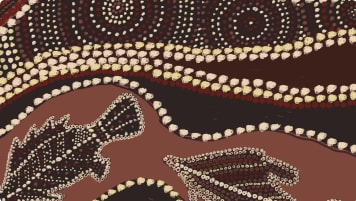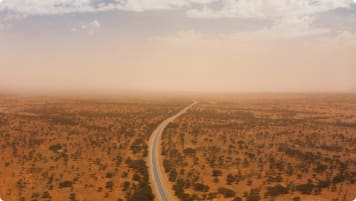Budj Bim Eel Traps, Victoria; A world heritage site.
Article supporting small group tours for senior couples and solo travellers of significant Aboriginal farming activity and aquaculture. A UNESCO world heritage site complementary to Mungo man and lady and more. The eels farmed were then a trading asset taken along songlines (trading routes.) forming part of kinship rituals.
11 Mar 21 · 10 mins read

Budj Bim Eel Traps
Over thousands of years the Gunditjmara people of southwestern Victoria, Australia, used volcanic rock created by the Budj Bim lava flow to construct a sophisticated stone aquaculture complex of fish traps, weirs, dams, and channels. Drawing upon deep knowledge of water cycles and migration routes, they created and manipulated landscape over a 100 square kilometre area to divert water flow and trap, grow and harvest eels and galaxia fish.
This practice ensured ample supplies of food year-round allowing the Gunditjmara, who were primarily nomadic, to develop into a settled society living permanently off the land. Evidence of this society, including the fish traps as well as stone houses, can be seen across the Budj Bim cultural landscape today. This consists of multiple locations such as Lake Condah, Muldoon’s Trap Complex and the Tyrendarra Indigenous Protected Area. As such, the eel traps have in recent years become an Australian UNESCO World Heritage site, the only one listed exclusively for its Aboriginal cultural values.
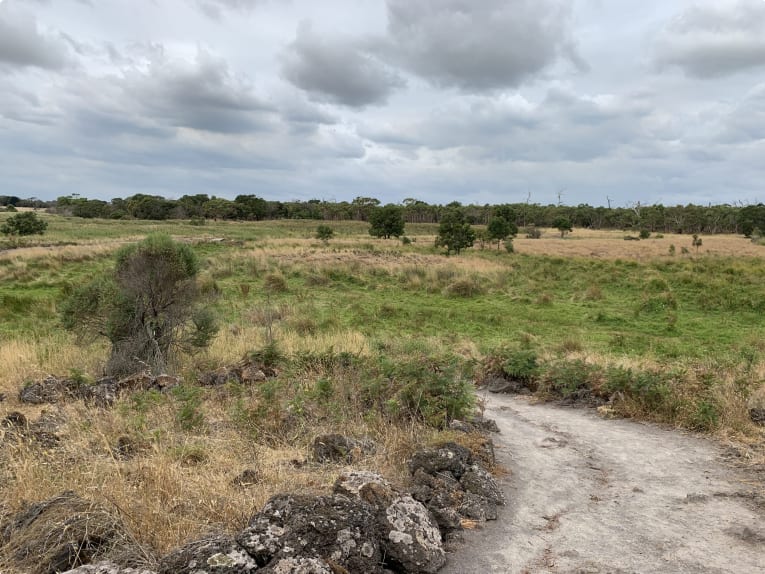
Much of the information from this article is sourced from The People of Budj Bim by the Gunditjmara people and Gib Wettenhall. It is intended to assist your day tour of Budj Bim as part of Odyssey Traveller’s Tour of the Southern States of Australia. This is a journey of learning around the Southern edges of the Murray Darling basin and up to the upper southern part of this complex river basin north of Mildura. Travellers gain an insight into Aboriginal habitation and land management dating back 120,000 years in Australia and then more recently the veneer of European settlement in the last two centuries on the landscape. It is part of a portfolio of Australian Outback tours offered by Odyssey for like-minded people who are curious about Outback Australia.
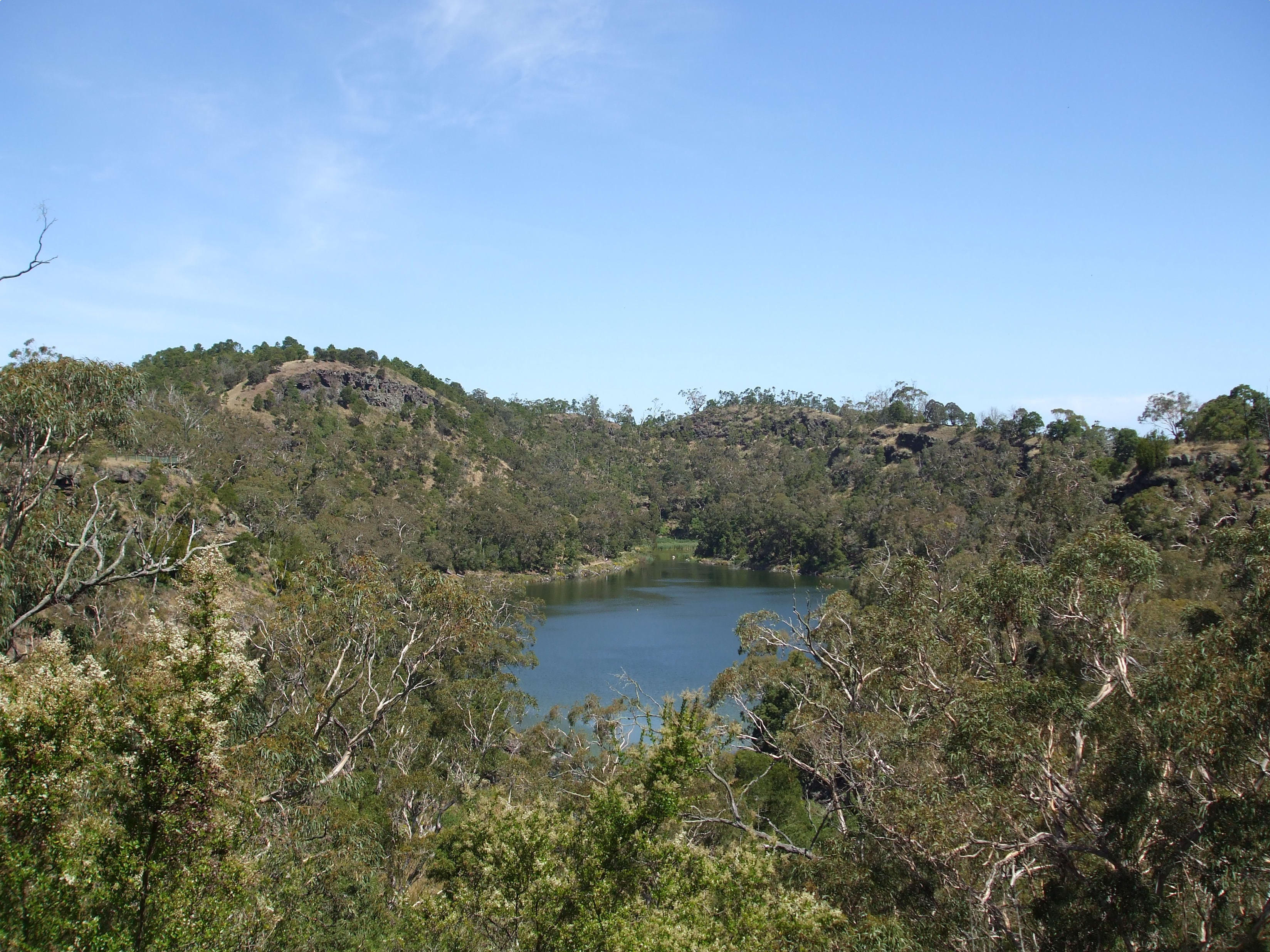
Creating the Landscape
In the Dreaming of the Gunditjmara people, it is said that ancestral beings gave the landscape its features, providing the people with the resources to live a settled lifestyle. They diverted the waterways and gave the stones and rocks to help build the aquaculture system. They gave the wetlands and the food enriched landscape that enabled survival.
It is said that after passing over the land, an ancestral being known as Budj Bim (‘Big Head’) transformed itself into the landscape. The dome mountain is its forehead and the lava spat through the earth its teeth.
This traditional creation story seems to refer to the series of violent volcanic eruptions of gas and lava that gave rise to Budj Bim (Mount Eccles) starting some 27,000 years ago. The volcano erupted at least 10 times, with the most recent eruption dating around 7,000 years ago.
Fanning out in all direction, the basaltic lavas flowed downhill at a rate of 7-10km per hour, spreading over 50km to the south. As it cooled, the lava fractured, breaking into a jumble of blocks and slabs. This process disrupted the drainage system of the region, creating a landscape rich in lakes, ponds, swamps, and wetlands – including Tae Rak (Lake Condah) and the Condah Swamp – all rich in wildlife.
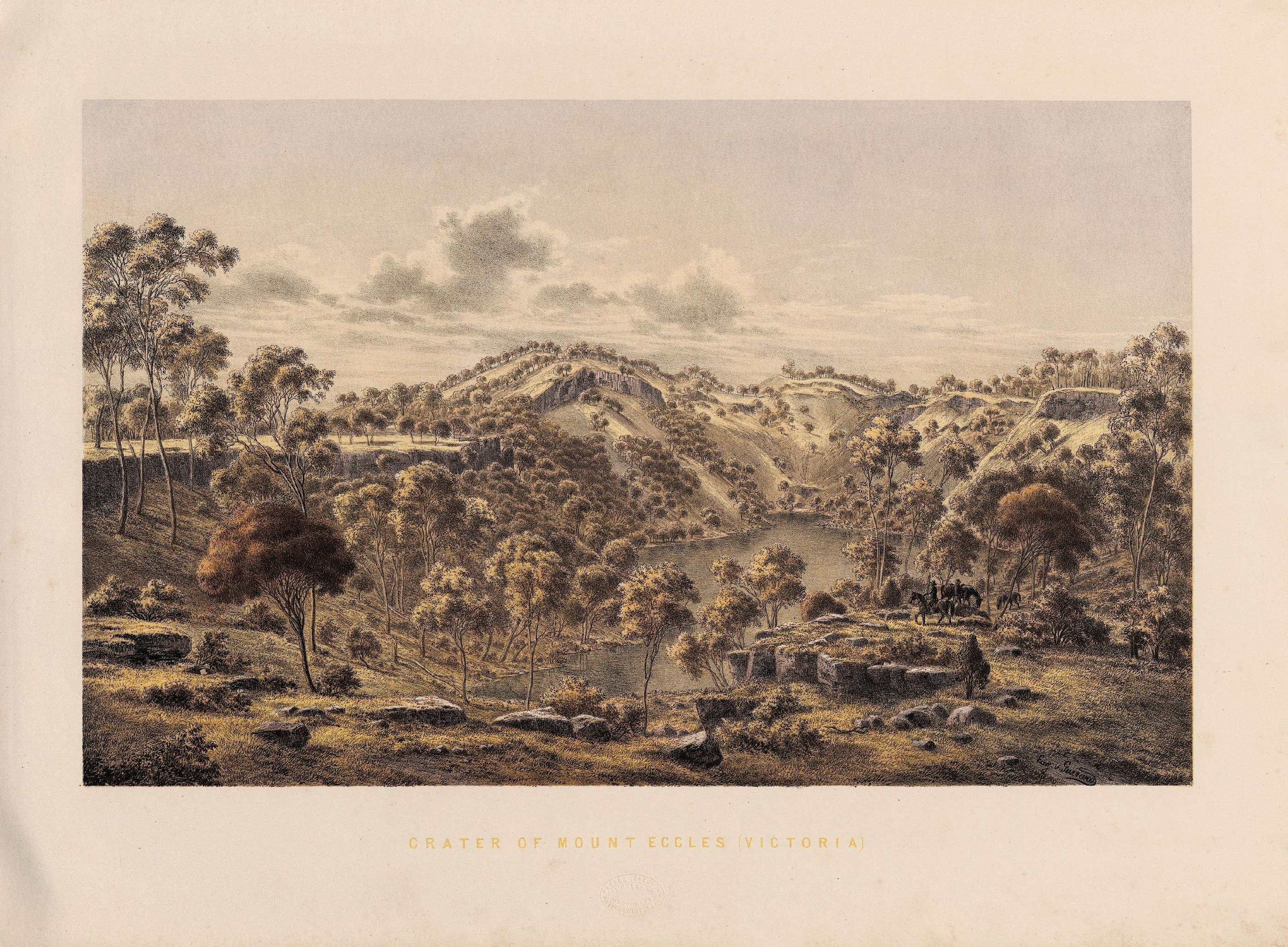
Indigenous Settlement
At Tae Rak the Kerrup Jmara clan of the Gunditjmara, or ‘lake people’, built a basalt walled weir at the highwater mark across the west channel into Darlot Creek. With high water held back in winter and spring, Tae Rak and the Condah Swamp linked to form one vast lake three to five metres deep and some 30km long. At summer, although outflows exceeded inflows, water remained to be generally permanent in the northern section of the lake. This supported large populations of water birds and other wildlife that could be exploited.
On the east side the blocking of the Eumeralla River caused the formation of Lake Gorrie and a massive swamp. Water was everywhere giving life to an abundance of plants and wildlife. The Nillan Gunditj people made this their home, forming a large township on the banks of the river, reportedly still containing over 500 people seven years after white settlement.
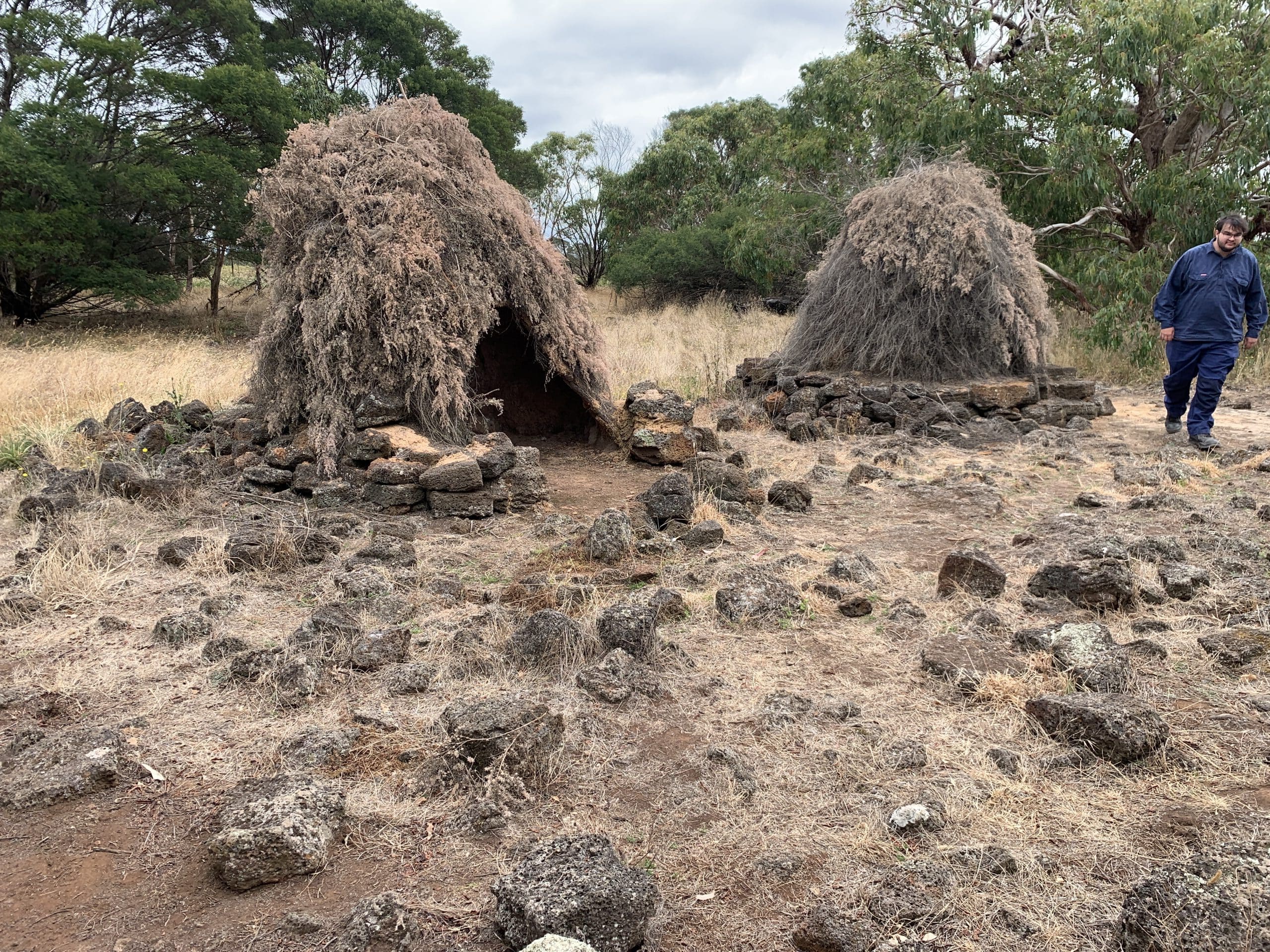
At the southern end of the lava flow, at what is now Tyrendarra, the joining of the Fitzroy River and Darlot Creek had created lakes, ponds and marshes that were almost permanent in nature. Weathering here had softened the sharp basalt so that the lava ridges were flattened and there were pockets of soil that held vegetation. Well drained, the flat-topped dry ridges were an obvious site for Indigenous settlement.

Overflowing with Eels and Fish
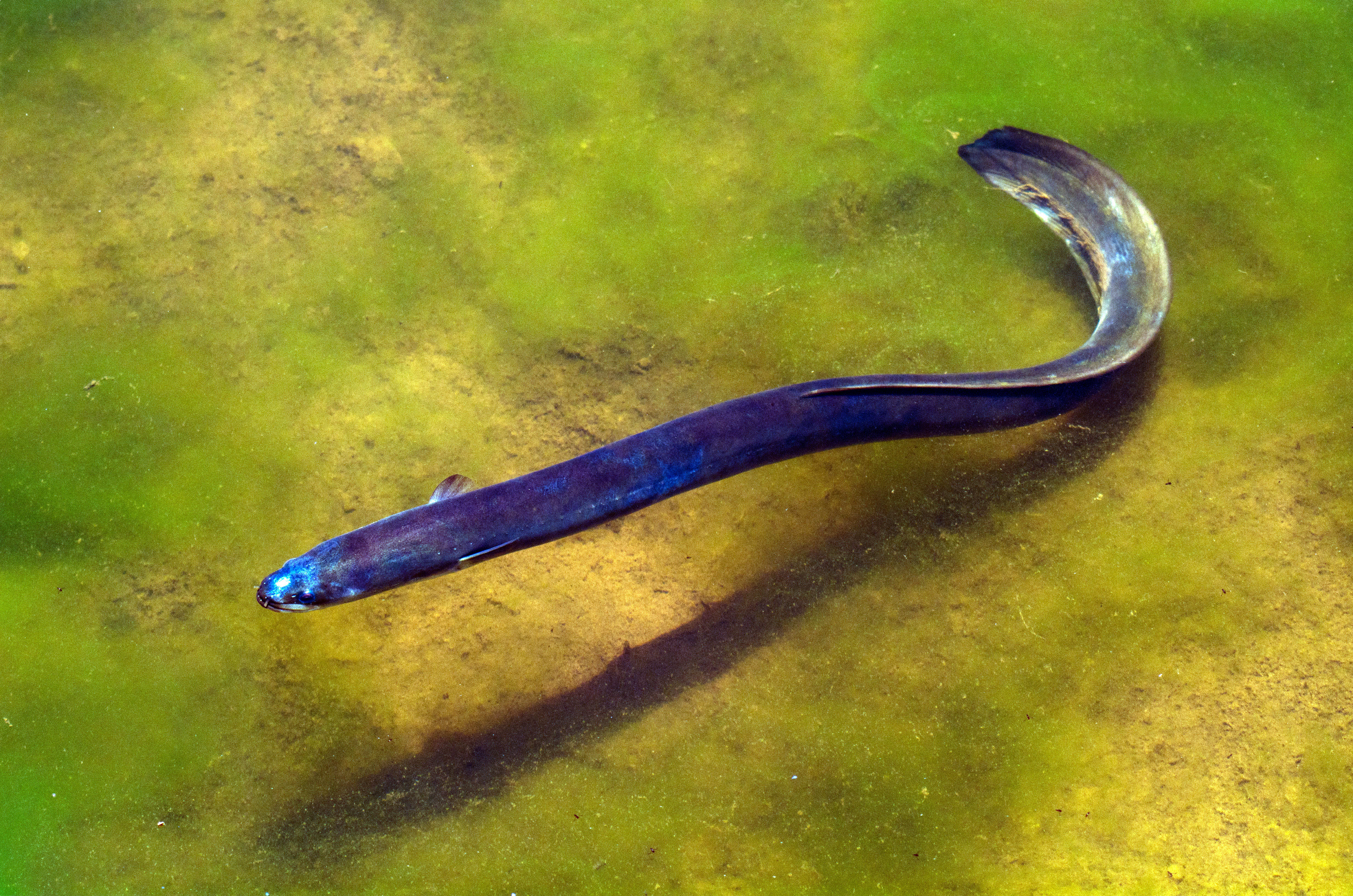
Budj Bim was an ideal for place for young short-finned eels to end their journey swimming upstream from their birthplace far out at sea. Eels grow best in the waters of lakes, pools, and swamps due to the trapped energy from sunlight and concentrated nutrients. And Budj Bim’s fissured lava landscape of rocky waterholes and reedy swamps, riddled over thousands of hectares with hammocks and depressions, had a particular advantaged in that it offered plenty of hiding places from predatory birds.
Known to the Gunditjmara as kooyang, it was their vast numbers that made a settled lifestyle at Budj Bim possible in the time before European settlement. Individual eels were present in their home territories all year round and could be speared or netted. In migration periods during spring and early summer numbers were even especially abundant, mature eels moving in the millions.
Shoals of a native type of whitebait, the common galaxia, also lived on the margins of lakes and ponds. On a full moon in autumn the shoals of galaxias would in traditional times would link and choke Darlot Creek as they migrated downstream to spawn in estuaries during high spring tides. The Gunditjmara caught them like eels, in woven grass fish traps in their tens of thousands. Between them, the overlapping migratory cycles of the eels and galaxias provided a plentiful stock of fresh fish for the Gunditjmara for two-thirds of the year, from autumn right through to early summer.
How the Fish Trap Systems Worked
The Budk Bim landscape allowed the Gunitjmara clans to create complex fish trap systems comprised of weirs, dams, and stone canals. Drawing upon knowledge of the seasonal rise and fall of water levels and of the geologic processes that surrounded them, these systems took advantage of every lake, creek and pond, and every conceivable water level. As the water level rose, some systems drowned and others became operational. Then when the water receded, the eels and fish became trapped in the ponds to be picked off at leisure when needed for food.
To construct the systems the people dug shallow channels – some over 350 metres long – into the basalt rock. These diverted water from the lakes and creeks to low lying areas, taking advantage of natural cracks and drainage lines. Abrupt curves in the channels manipulated water flow speed, while different wings of the systems funnelled water and eels from all directions in what looks like an elaborate maze. To confine eels and fish within the system, walls half a metre high and some over 50 metres long were built out of basalt rubbing. Within the systems, V-shaped traps and barrier weirs further slowed the water’s velocity.

Behind holes at the apex of the Vs, or regularly spaced along weir walls, the fishers placed three to four metre long, funnel shaped nets into which the eels would plunge headfirst. The nets were tightly woven out of river reeds and spear grass and held in place by stones or rocks strategically placed around the collar of each net.
Some eels were kept alive and grown fat in holding ponds placed near home sites, to be eaten later. They were also preserved by smoking in the hollows of large old trees. As such, the fish trap systems supplied enough food to sustain the Gunditjmara community all year-round, while also allowing them to trade with other language groups, with eels considered a valuable commodity.
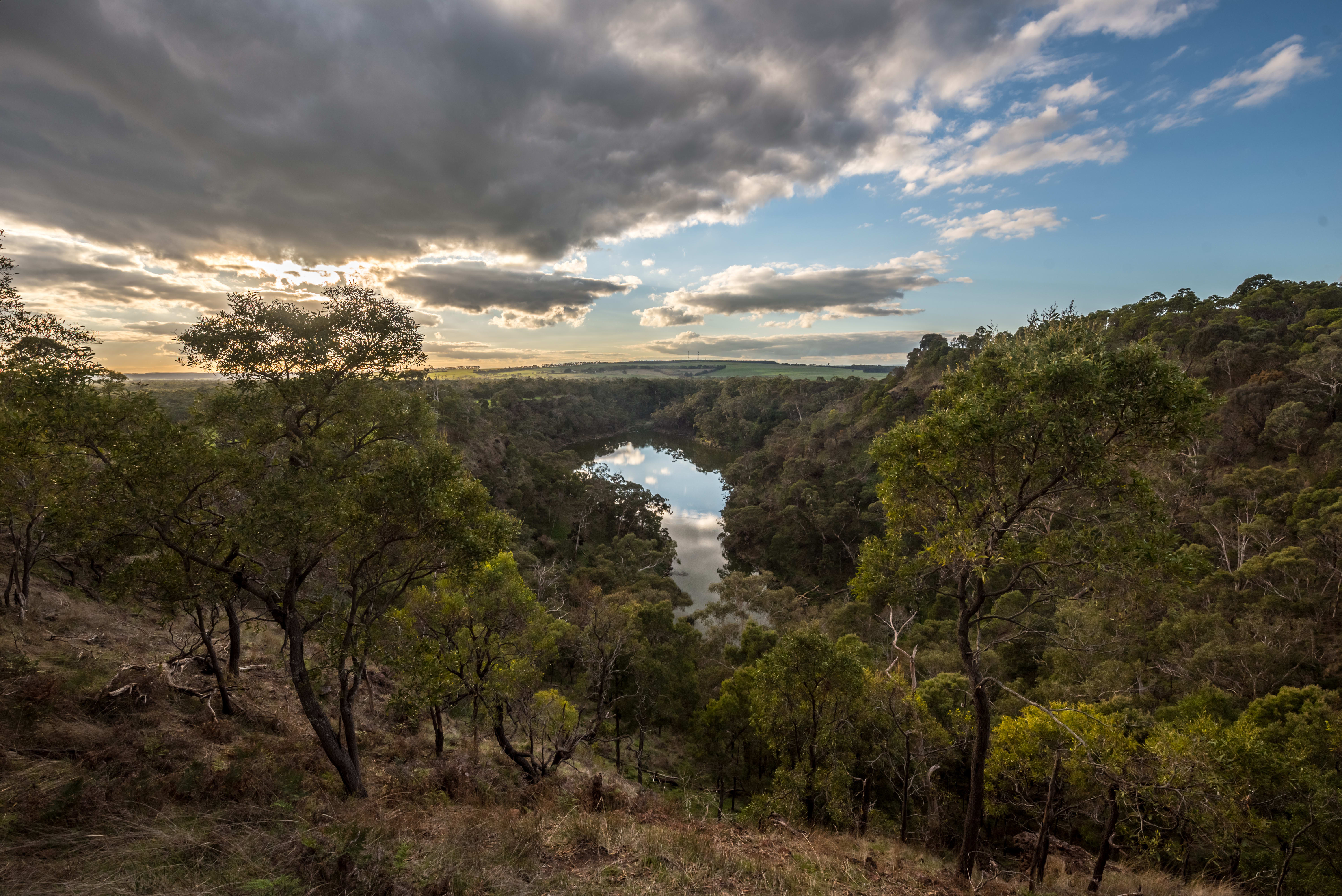
Fish Trap Systems Spread Across the Entire Landscape
Weirs and channels – the defining characteristics of the fish trap systems – can be found across Budj Bim wherever there were waterholes punctuating the lava. Evidence suggests that the entire landscape was an elaborately constructed aquaculture complex clearly designed to function over two-thirds of the year. Up to 10,000 people could have been fed with eels acting as the staple source of protein.
As the largest lake, the fish trap systems at Tae Rak are the most well-documented traditional site in the landscape. Nearly 200 constructed items association with the aquaculture complex have been recorded here. Forty per cent are the traps themselves, systematically punctuated at key points to form a one gigantic eel trap out of the landscape.
The majority of fish traps are concentrated on Tae Rak’s south-western margins where the lava flow created a series of deep bays ideal for catching then returning migrations of eels and galaxias. Fish trap systems within or adjacent to Darlot Creek were also used, better situated for the downstream migratory run to the sea. Evidence of the fish trap systems is also being dug up at other large bodies, such as Lake Gorrie or Trendarra.
The age of the entire Budj Bim fish trap complex is open to conjecture. Until recently, most experts regarded its construction as being as recent as two or three hundred years old. The timescale has since been rolled back by at least two to three millennia based on deeper excavations. And it could date back as far 6,700 years based on radiocarbon dating of a channel in the south-west fish trap conducted recently by archaeologists. If confirmed by subsequent excavation, thus will make it the one of the oldest aquaculture systems in the world and older than more internationally well-known examples of ancient engineering like the Egyptian pyramids or Stonehenge.
Settlements of Stone Houses
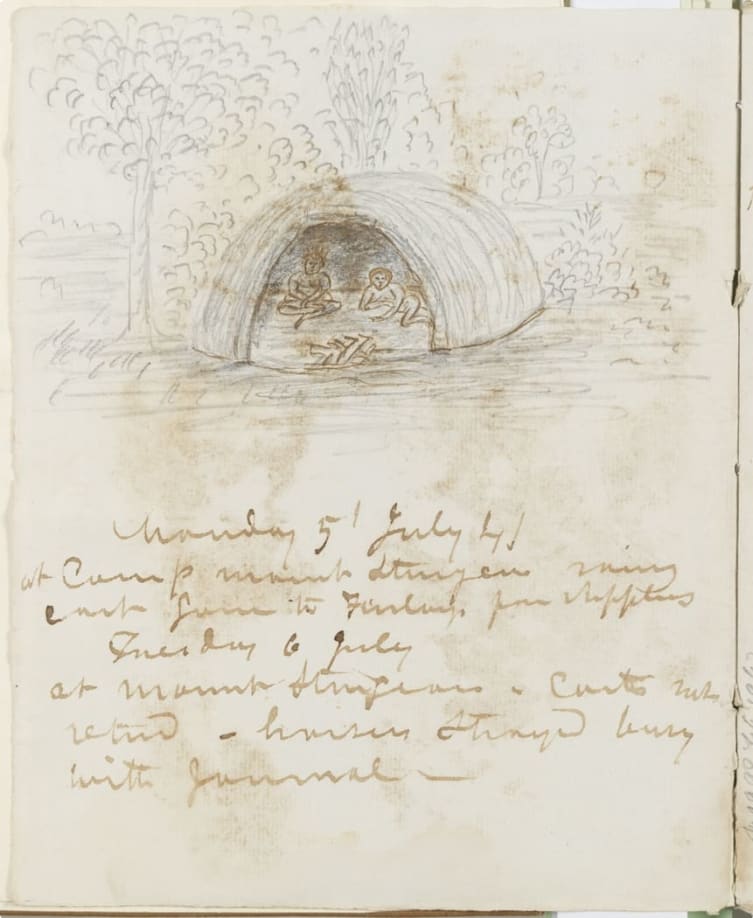
With ample supplies of water combined with engineered wetlands providing a well-stocked supply of food, the people of Budj Bim were able to stay put and develop into a settled society with villages. To assist with living permanently on the land, they constructed stone-walled dwellings with sturdy, weatherproof domed roofs.
Stones from the lava flow were used to create the walls of their circular houses, estimated to have been one metre high. Domed roofs were then likely constructed from a frame of upstretched wooden timber sourced from woodland knolls. These could have been logically woven together by spear grass, echoing the technology used in manufacturing the eel nets. For weather proofing, the people would have clad the roof with clay or the plentiful tussock grass.
At Lake Condah, there is plenty of evidence for not one but many settlement clusters along lava ridges abutting the lake and surrounding waterways. At least 15 clusters have been surveyed on the broad rocky south-western peninsula jutting into the lake. This is the logical place for the settlement’s centre given its prime position along the downstream migration of eels and fish via the lake’s edge on one flank and the upstream migration via Darlot Creek on the other.
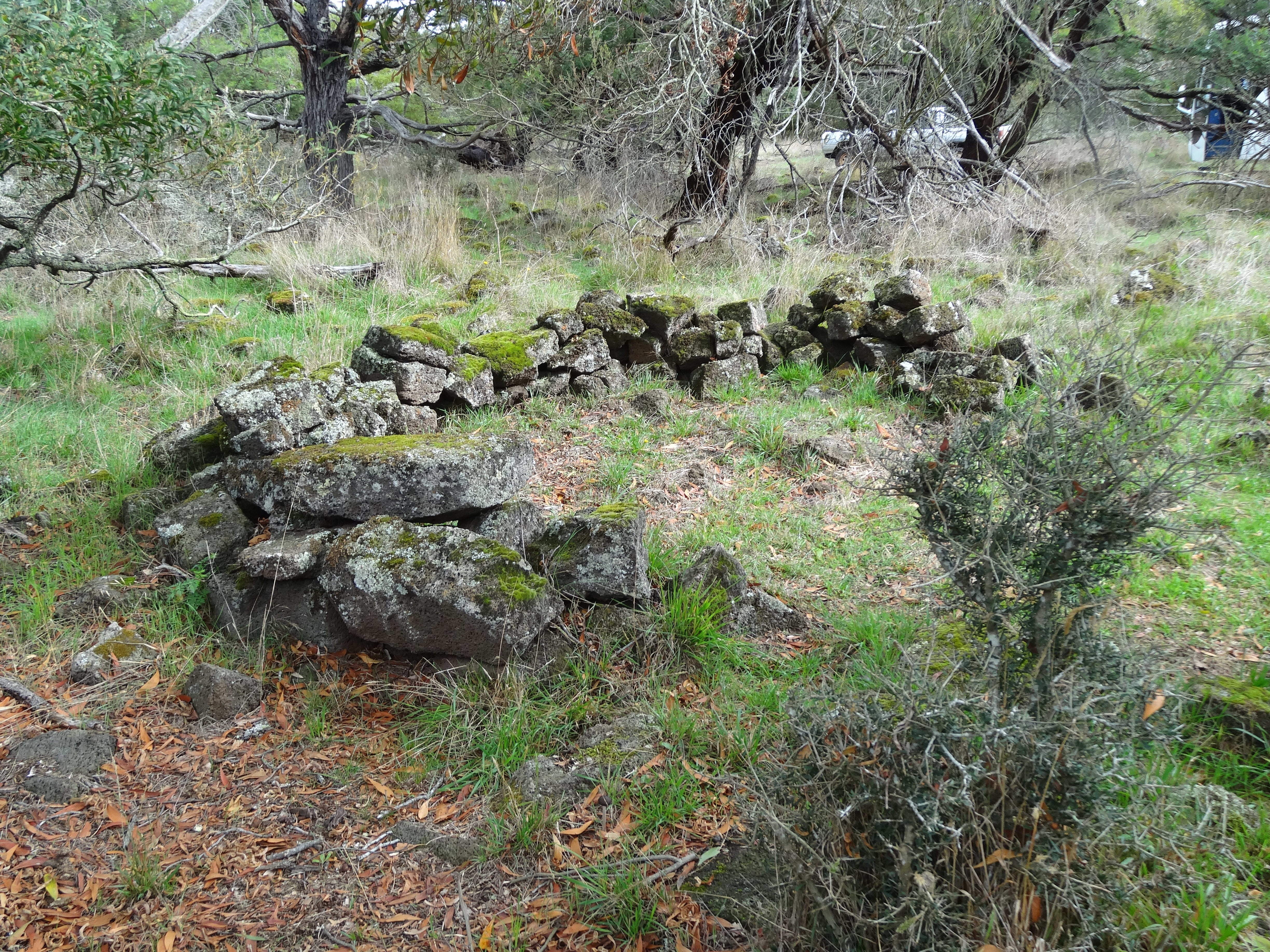
Lake Condah is the most substantial and thoroughly researched location but its not the only one, with evidence of almost 300 stone houses spread throughout the 100 square km landscape of Budj Bim. The remnants are the only remaining permanent settlement built by an Indigenous community in Australia.
The existence of the stone houses and fish traps, along with other cultural sites around Australia, dispels the myth that all Aboriginal people were primarily nomadic hunter-gatherers. They are representative of extensive farming and land management practices and strong economic and agricultural lifestyles.
The Road to UNESCO World Heritage Status
Tragically, European colonisation would threaten the Budj Bim cultural landscape. From around 1810 the seasonal presence of whalers and sealers began to impact the Gunditjmara people, and from 1834 tensions began to amass with the first European setters arriving in the Portland Area.
This culminated in the outbreak of the Eumeralla Wars, a tragic conflict between the Gunditjmara people and settlers – with the result that by 1846, Gunditjmara resistance was suppressed. In the 1850s, Aboriginal people across Australia were increasingly moved into church-run missions. Framlingham Mission opened further west, but the Gunditjmara people campaigned to stay in their traditional land. In response, Lake Condah mission opened in 1867.
The mission was officially closed in 1918, and the mission lands returned to the Gunditjmara people in 1987.
The campaign to have the Budj Bim site listed on the UNESCO World Heritage list began in 2002. Raising knowledge of the importance of the site, the Gunditj Mirring Traditional Owners Corporation succeeded in having Budj Bim listed on the Australian Heritage Register in 2004.
With the support of state and federal governments, Gunditjmara traditional owners prepared a report detailing the archaeological and cultural importance of the site. It was presented to the 43rd session of the World Heritage Committee in Baku, Azerbaijan, in June-July 2019. Awarded World Heritage Status, the site joins over twenty other Australian locations on the list.
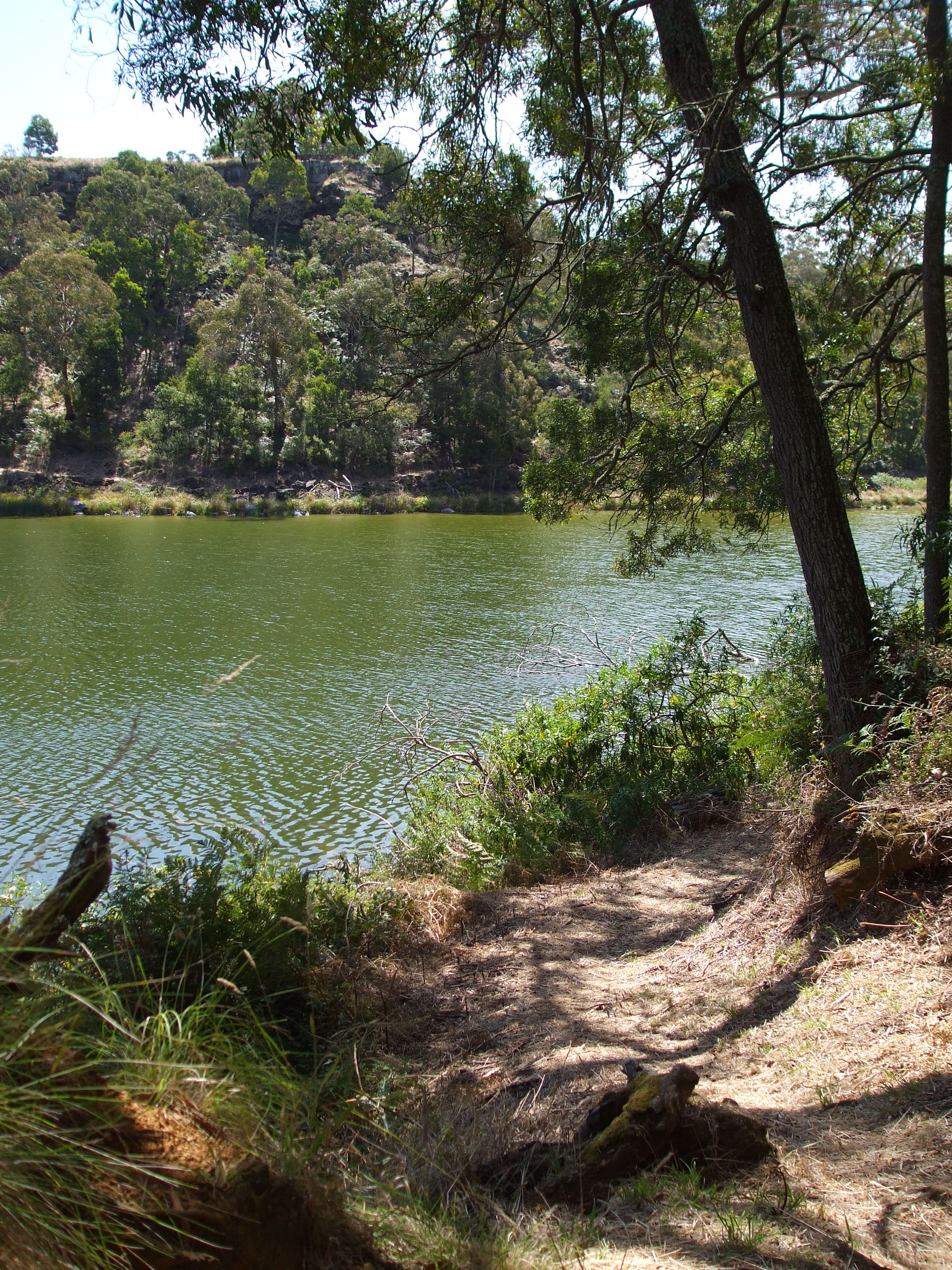
Tour the Budj Bim Cultural Landscape
Odyssey Traveller visits a number of these important sites – including Lake Mungo and the Budj Bim Cultural Landscape – as part of our new tour of the Southern States of Australia. Focusing on New South Wales, Victoria, and South Australia, our tour gets away Sydney, Melbourne and Adelaide and casts these states in new light, exploring the little-known places where the three states meet.
Our tour of Southern Australia begins in Adelaide. The trip then heads to the historic shipping town of Port Fairy on the Southern Ocean coastline, stopping for a night in Mount Gambier on the way. The following day, we enjoy a day tour of the Budj Bim Cultural Landscape, learning about Aboriginal culture and aquaculture with a local tour guide.
Following this, we head further into central Australia, visiting the Naracoorte Caves Park, a UNESCO site home to the fossils of ancient megafauna – recognisable wildlife, such as kangaroos, lions and wombats, on a grand scale. Our southern Australia tour then heads further into the Australian outback, visiting the spectacular scenery of the Willandra Lakes, home to Mungo Lady and Mungo Man. From here, our Australia tour heads to the Murray River town of Mildura, where we enjoy a short paddle steamer trip, before we head to the quintessential outback city of Broken Hill. From Broken Hill, our tour heads back to South Australia, visiting the railway centre of Peterborough and the small town of Burra.
Travellers with an interest in learning more about the Aboriginal heritage of Austrlaia may want to check out our other outback Australia tours, which include visits to the important cultural site of Wilpena Pound on our tour of the Flinders Ranges; to ancient rock art in the Kimberley, Western Australia; and to the Brewarrina Fish Traps in outback Queensland.
Every Odyssey guided tour is designed especially for mature and senior travellers, who want an authentic and informed experience of their destinations. Our tours aren’t the typical tourism Australia holiday – Blue Mountains, the Great Barrier Reef, and the penguin parade on Port Phillip Island. Instead, we pride ourselves on getting of the beaten path and making you think about Australia and New Zealand in new ways. We explore the trading history of the Victorian colony, view Arts and Crafts mansions in the South Australian Adelaide Hills, and learn about the emergence of Australia‘s primary industries of mining and agriculture on our tour of Outback Australia.
Articles about Australia published by Odyssey Traveller:
For all the articles Odyssey Traveller has published for mature aged and senior travellers, click through on this link.
External articles to assist you on your visit to Victoria:
- UNESCO: Budj Bim Cultural Landscape
- Budj Bim Cultural Landscape
- Regional Spotlight: Budj Bim Cultural Landscape
- Gunditj Mirring Traditional Owners Corporation
- Ancient Indigenous aquaculture site Budj Bim added to UNESCO World Heritage list
- Fish traps and stone houses: New archaeological insights into Gunditjmara use of the Budj Bim lava flow of southwest Victoria over the past 7000 years
Related Tours

days
Mar, May, Aug, Sep, Oct +2Small group tour of World Heritage sites and more in the Southern States of Australia
Visiting New South Wales, South Australia
Discover the World Heritage Sites of the southern states of Australia travelling in a small group tour. A journey of learning around the southern edges of the Murray Darling basin and up to the upper southern part of this complex river basin north of Mildura. We start and end in Adelaide, stopping in Broken Hill, Mungo National Park and other significant locations.

days
Feb, Mar, May, Jul, Sep +2Guided small group motorcycle tour of World Heritage sites in Victoria and South Australia
Visiting
Discover the World Heritage Sites of the southern states of Australia travelling in a small group tour of like minded motorcyclists. A journey of learning around the southern edges of the Murray Darling basin and up to the upper southern part of this complex river basin north of Mildura. We start and end in Adelaide, stopping in Broken Hill, Mungo National Park and other significant locations.
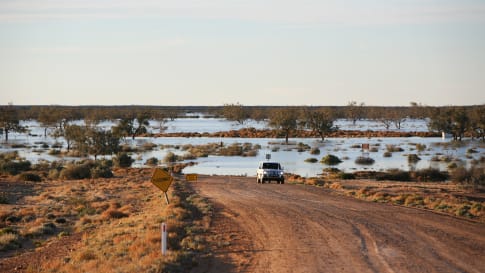
65 days
MarLong tour of Australia for a small group
Visiting New South Wales, Northern Territory
Small group tour for senior couples and solo travellers touring Australia. Travelling through the outback and visiting many of the famous sights as well as off the beaten track locations. Learn about the history of the people who explored the deserts, from indigenous communities to Europeans, as well as Burke and Wills, visit White Cliffs, Marree and far north Kakadu and the Kimberley.
From A$48,995 AUD
View TourArticles about Aboriginal Aquaculture

Ancient Aboriginal trade routes of Australia
Ancient Aboriginal trade routes of Australia Trade was a central part of life for Aboriginal people prior to the British settlement of Australia. Trading routes criss-crossed the nation, dispersing goods, information, technologies and culture thousands…
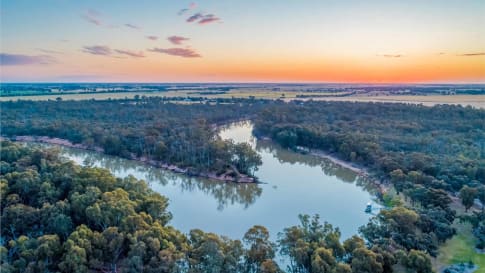
Appreciating Australian River Systems
Appreciating the linking of the river network into the Australian, history, culture and landscape on a small group tour for mature and senior travellers of couples or solo travellers is an integral part of understanding the continent of Australia and Aboriginal settlement.

Understanding Aboriginal aquaculture
Aboriginal communities had the ability to harvest fish some 20,000+ years ago. Creating major centres of trade and cultural exchange, and supported permanent communities. Discover and learn more on a escorted small group package tour to Victoria, South Australia & Queensland for mature and senior travellers, couples and solo travellers interested in learning.
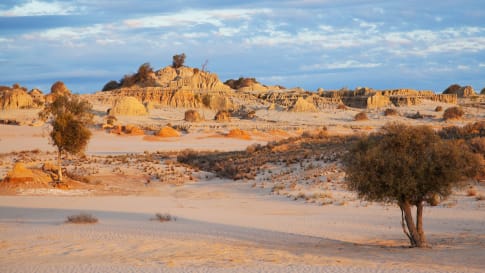
Uncovering the ancient history of Aboriginal Australia
For small group escorted tours of Australia in Queensland, Victoria, New South Wales, South Australia, Tasmania, Western Australia and the Northern Territory a guide on Aboriginal culture for mature and senior travellers.

Mungo Man and Mungo Lady, New South Wales
Part of a small group tour of World heritage sites on Victoria, NSW & South Australia for mature and senior travellers. Learn and explore in the Mungo National park about Aboriginal settlement and the fauna and flora of this National park.

Motorbike tours for the mature and senior traveller
Best Motorcycle tours for the mature and senior traveller. This is the time for that motorcycle trip you may have dreamt about becoming a reality.Odyssey Traveller offers you the opportunity to ride through some of…

Landscape of Southern Australia from Mallee and Mulga.
Escorted small group tours for mature and senior travellers in Western Australia, Victoria, South Australia & NSW drive through former Mallee country. Article explains the iconic beginnings of Mallee and Mulga in the arid landscapes.
